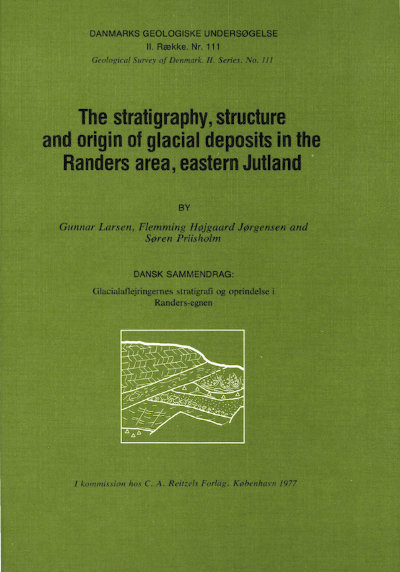The stratigraphy, structure and origin of glacial deposits in the Randers area, eastern Jutland
DOI:
https://doi.org/10.34194/raekke2.v111.6902Abstract
The investigations of the glacial sequence in the Randers area include mapping of the surface layers, study of bore profiles and detailed examination of outcrops, concentrating on the determination of transport directions in the deposits.
The following stratigraphic succession has been established:
Highest: NE till
Tebbestrup Formation (melt water deposits)SE till
Haldum Formation (melt water deposits)
Lowest: NE till
The two uppermost units can with certainty be referred to Weichselian. Arguments are presented that the three lowermost units are of Saalian age.
The origin of the sequence is discussed. The highest hills in the area (Ølst, Lysnet) were probably formed by the Saalian ice from the NE, since they appear to have influenced flow directions during the deposition of the Haldum Formation. This formation is considered to represent a sandur formed in front of the advancing ice from the SE. In the Weichselian, prior to the formation of the Tebbestrup Formation, the landscape obviously had a varied relief. The formation which infills the lower parts of this landscape is considered as a sandur, formed in front of the advancing ice from the NE. This sandur, together with the prominent hills from the Saalian, formed the substrate for the ice from the NE. This ice modified, but did not destroy the old hills.
Downloads
Published
Issue
Section
License
This article is distributed under a CC-BY 4.0 licence, permitting free redistribution and reproduction for any purpose, even commercial, provided proper citation of the original work. Author(s) retain copyright over the article contents.


